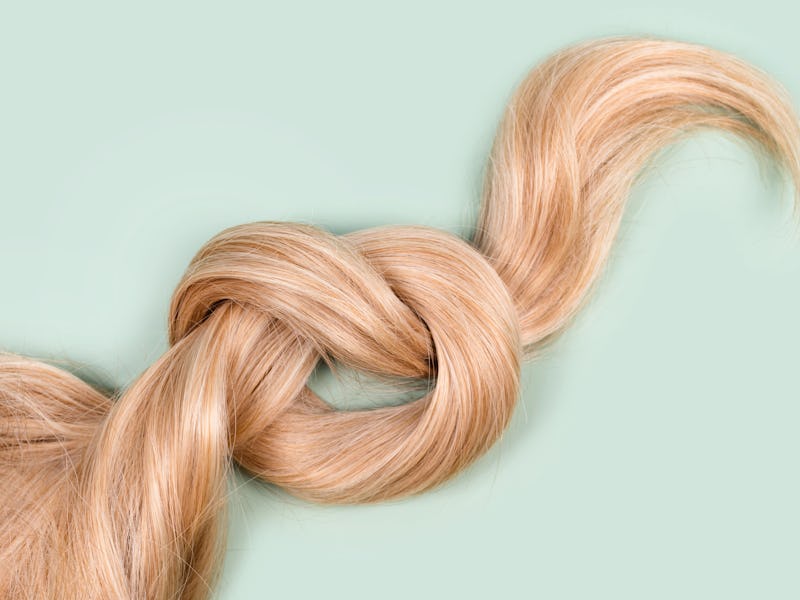Hormones in hair may reveal how chronically stressed you are — study
Long-term stress isn’t good for you, and your hair knows it.

Stress can do a number on your body — and that includes the hairs on your head. Stress releases hormones that affect hair pigmentation, turning your luscious locks gray or white. It can also make your hair fall out, triggering hair follicles to enter a “dormant” phase that results in hair loss. And now, according to a paper published Wednesday in the journal PLOS Global Public Health, researchers have discovered that stress levels are also reflected in how much of the hormone cortisol is stored in your hair.
What’s new — In the new study, researchers in Mexico and Iceland tapped into the Mexican Teachers Cohort and the Icelandic Stress and Gene Analysis cohort, which include women over 18. The researchers analyzed hair samples from more than 1,200 women and then asked the participants to fill in a Perceived Stress Scale. This psychological questionnaire measures the taker’s perception of their stress.
The researchers found a linear relationship between the women’s perceived stress and cortisol concentration in their hair. The higher a person scored on the stress scale, the more cortisol they had — one additional point on the scale corresponded to a 1.4 percent bump in hair cortisol levels on average.
Stress can affect hair color and make it fall out.
Here’s the background — This is not the first study to show cortisol can accumulate in hair. It’s believed the hormone — secreted by the adrenal glands atop the kidneys during times of stress or high-alertness, like when you first wake up — penetrates the innermost layer of the hair, called the medulla, through passive diffusion from the blood.
Because hair grows all the time, researchers have tried in the past to tease out whether hair cortisol levels link up to long-term stress exposure. The idea is that cortisol in hair could serve as a biological signature, or biomarker, for chronic stress experienced over a period of months or weeks. Currently, cortisol levels are typically measured through blood, urine, or saliva tests, but these only reveal acute stress.
Past studies haven’t been able to conclude whether hair cortisol concentration could be a conceivable biomarker: Cortisol levels tend to vary by gender and over an individual’s lifetime, and many older studies involve small groups of people. By using larger and more culturally diverse sample size, this study may offer some clarity. As the authors write in the paper:
“This study demonstrates a positive association between self-perceived stress and hair cortisol levels across two cultures with diverse sources of stress.”
Why it matters — Prolonged stress isn’t good for the body: Studies have shown it could go hand-in-hand with premature aging, early mortality, depression, chronic disease, and overall poor quality of life. So having a handle on how someone experiences stress beyond their own self-report, which can be flawed, gives clinicians another tool in their kit to intervene and treat chronic stress.
It is also important to note that in the study, individuals who scored the highest on the stress scale had significantly higher hair cortisol levels compared to those who scored among the lowest for stress. Drilling deeper, women who scored the highest tended to be young, “less likely to have a graduate degree, or to be married,” according to the researchers, and to report a status other than “employed.” They were also more likely to have a BMI categorized as obese and be current smokers. All of these lifestyle and environmental pressures can play a role in fostering stress — and in helping to diagnose and treat it.
We might one day be able to test an individual’s exposure to prolonged stress just from a strand of hair.
What’s next — While the researchers did observe small distinctions between the two groups of women, on a large scale, this study does appear to measure an effect across cultures, even though both sets of women experience different stressors.
A great strength of this study is that it looked at two different groups of women living on two continents and in different life settings. But on the flip side, since only women were involved in the study, the researchers say this finding needs further research to determine how gender differences play into the stress-cortisol axis, as well as more long-term studies to observe how cortisol in the hair changes over time and as stress waxes and wanes.
Determining causal direction is also “outside the scope,” the researchers write. In turn, they caution that the effect they see is modest and needs to be replicated.
Eventually, doctors may be able to use just a strand of hair to see how stressed out we are.
This article was originally published on